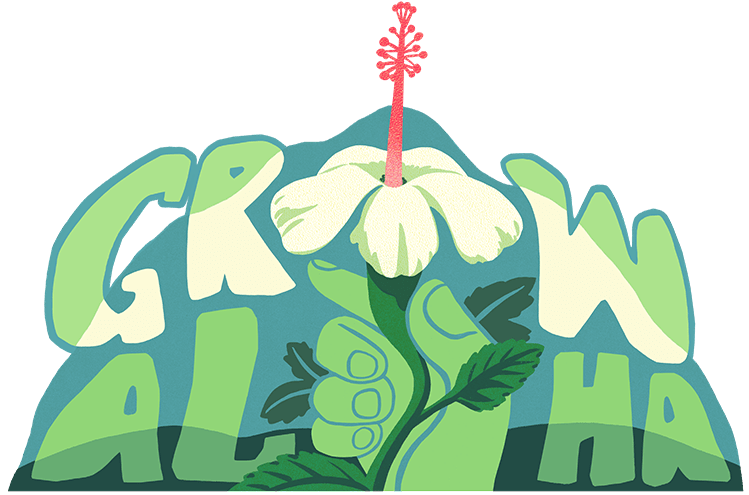
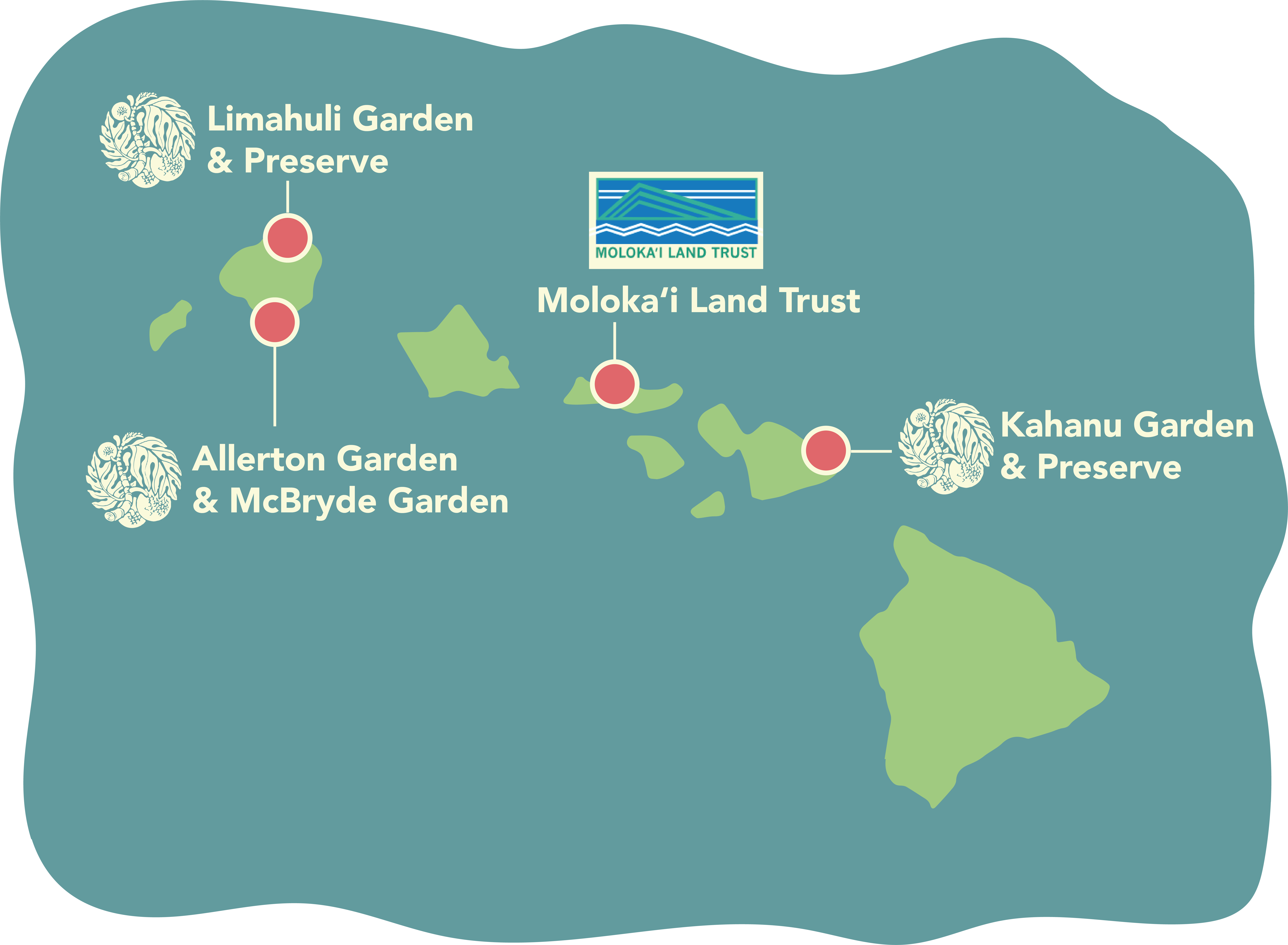
When we grow Hawaiian native plants and heritage crops, we grow aloha for ʻāina. Adopt one of these cherished plants every third Saturday at our free Grow Aloha plant giveaways at NTBG and partner locations, including the Molokaʻi Land Trust!
Grow Aloha plant adoptions are free and open to Hawai’i residents (one per family). Please note that plants are subject to availability and will be distributed on a first-come, first-served basis.
Allerton Garden & McBryde Garden
South Shore Visitor Center
4425 Lawai Rd, Koloa, HI 96756
Kahanu Garden & Preserve
650 Ulaino Rd, Hana, HI 96713
Limahuli Garden & Preserve
5-8291 Kuhio Hwy, Hanalei, Kauai, HI 96714
Molokaʻi Land Trust
1800 Farrington Ave, Ho’olehua, HI 96729
Artwork by Carly Lake
Loulu, Hawaiʻi’s only native palm, have a breathtaking presence. To see an older loulu in its natural habitat provides a glimpse into Hawaiʻi’s past when these incredible palms were more abundant and widespread. Learn more about loulu »
Our partners at Molokaʻi Land Trust will be giving away hōʻawa in July
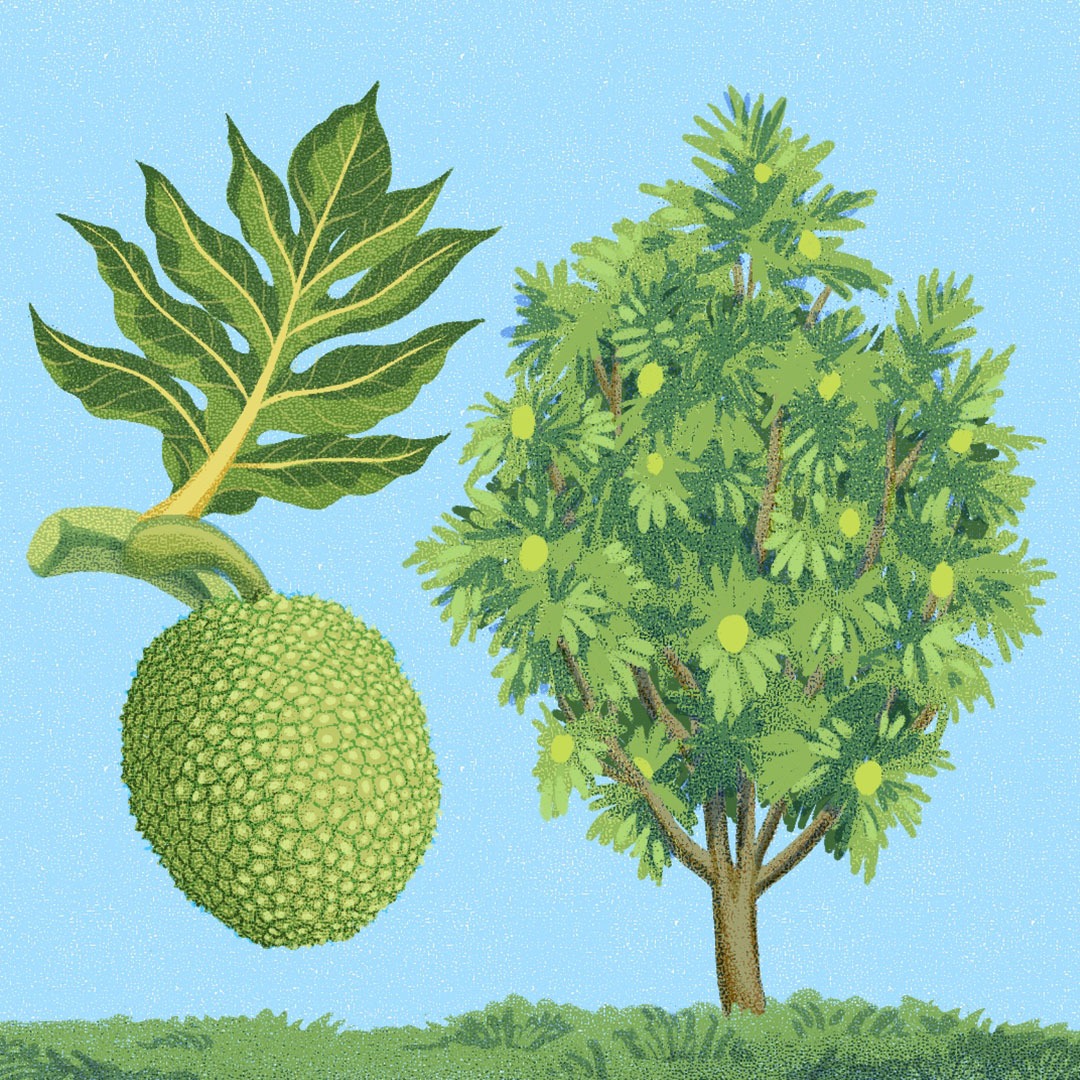
Breadfruit, known as ʻulu in Hawaiʻi, has been a traditional staple crop of the indigenous cultures of Oceania for thousands of years to this day. Fast growing and prolific, breadfruit produces a tasty, nutrient-rich fruit so versatile that it can be prepared hundreds of ways. Learn more about breadfruit »
Our partners at Molokaʻi Land Trust will be giving away ʻākia in August.
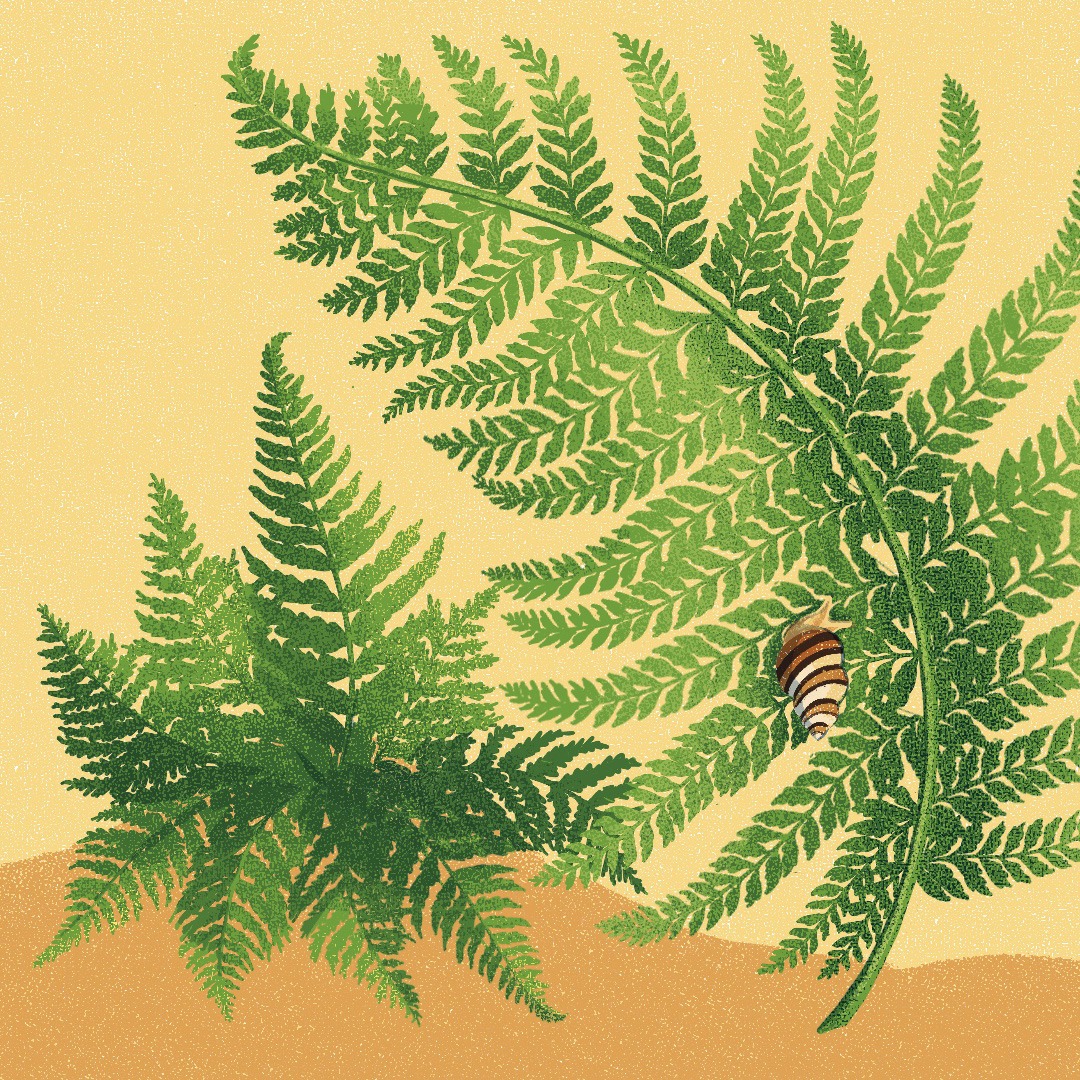
Beloved by many including lei makers and hula practitioners, palapalai fern is one of the important plants associated with Laka, the goddess of hula. Palapalai has a beautiful, lacy appearance and is a perfect addition for that shady spot in your yard. Learn more about palapalai »
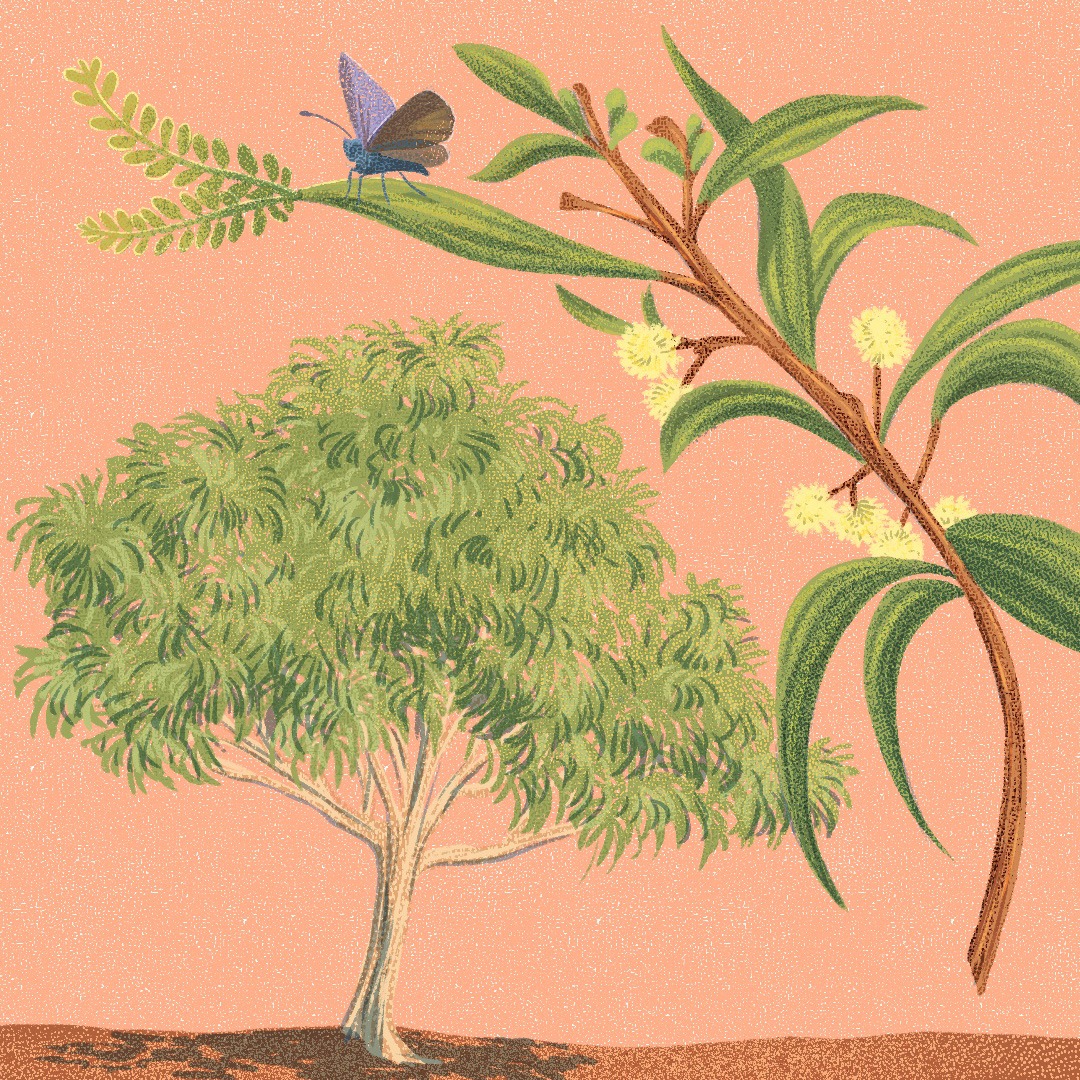
A cousin of the well-known koa tree, koaiʻa is a fast-growing hardwood prized by woodworkers for its beauty and durability. Unlike koa, which typically grows at higher elevations, koaiʻa thrives in lower elevations. Learn more about koaiʻa »
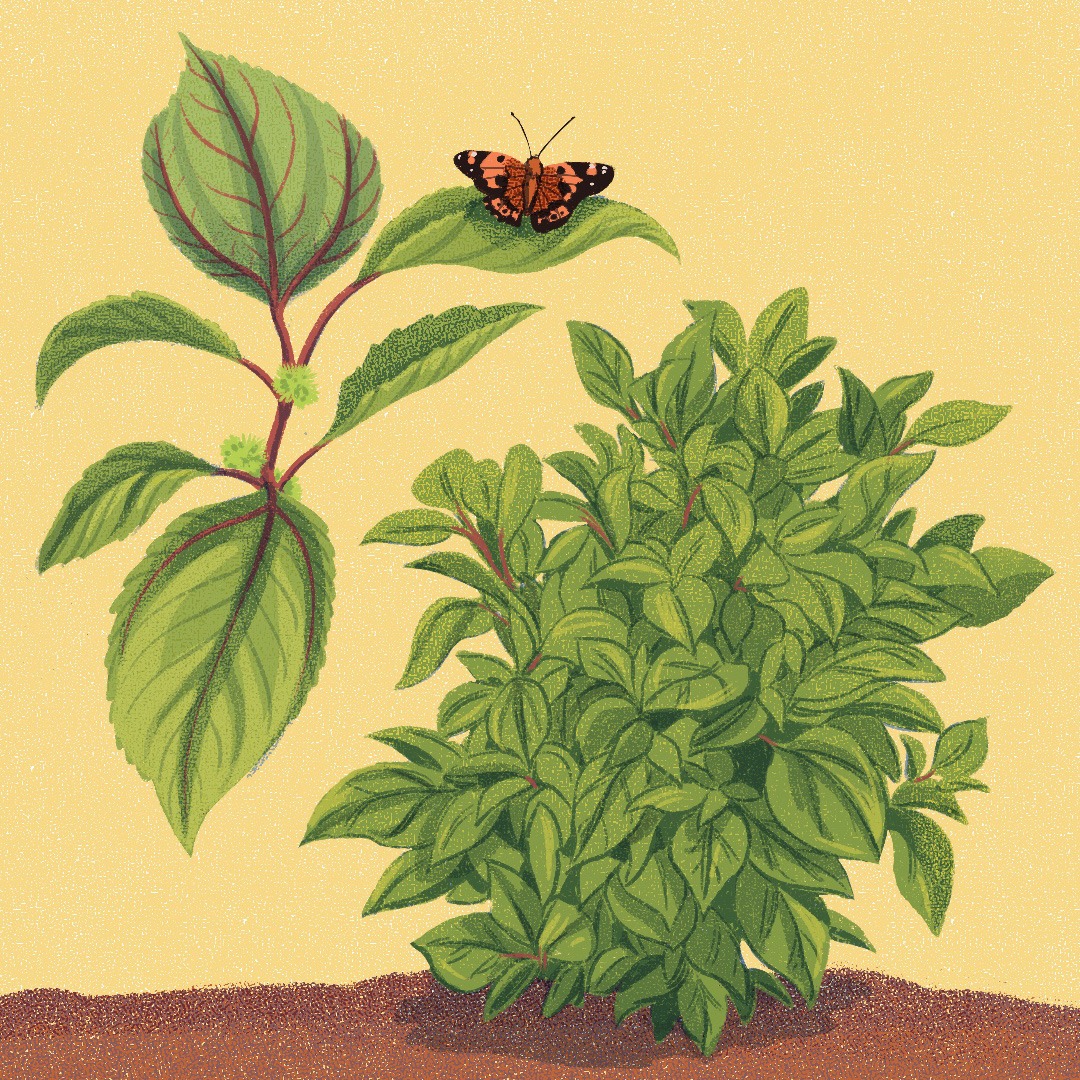
Often known for its medicinal and ceremonial uses, māmaki is a beautiful native shrub that thrives in the understory of larger trees or structures. A variable plant, māmaki is the host plant for Hawaiʻi’s Kamehameha butterfly as well as several other insects. Learn more about māmaki »
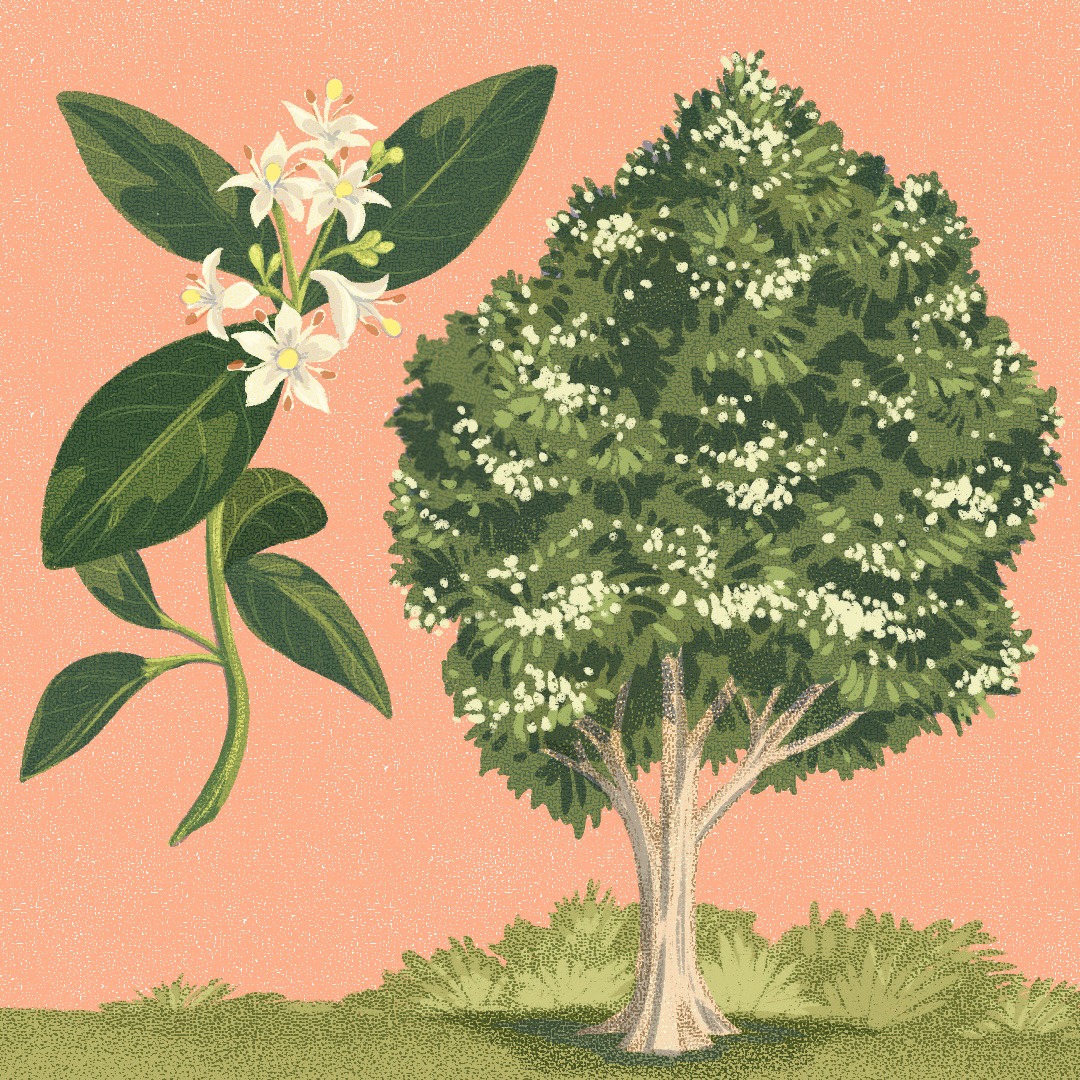
When an alaheʻe is in bloom, its fragrant flowers will likely greet you before the plant even comes into view. Alaheʻe boasts glossy dark green leaves and small white flowers which grow in clusters. The tree grows in a somewhat radial patter similar to a Christmas tree, and makes an excellent alternative to imported Christmas trees during the holiday season. Learn more about alaheʻe »
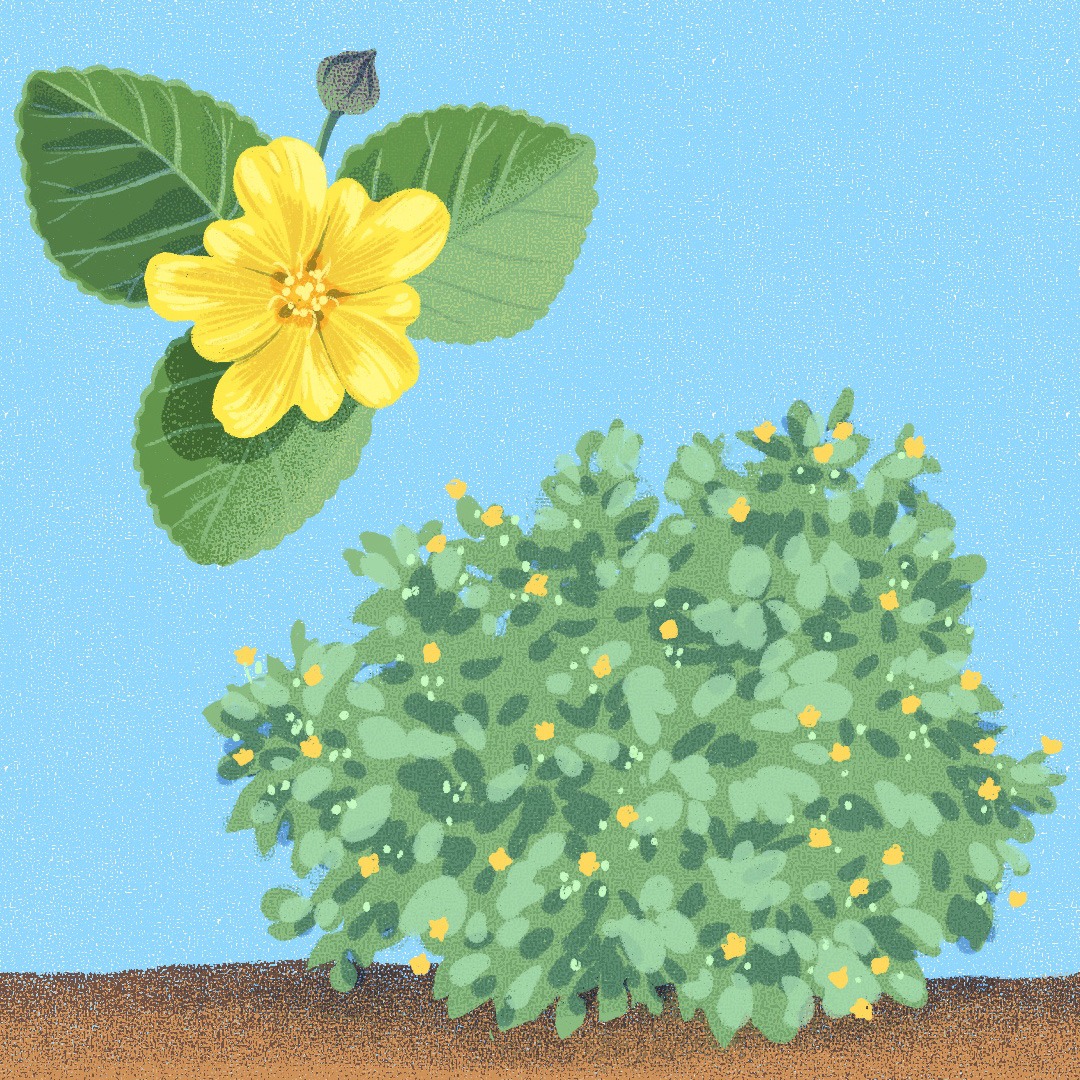
ʻIlima is a highly variable plant known for itʻs delicate, vibrant yellow flowers. Known as the official flower of the island of Oʻahu, ʻilima blossoms can be strung into an exquisite lei. About 500 flowers and a great deal of patience is required to make such a lei. Learn more about ʻilima »
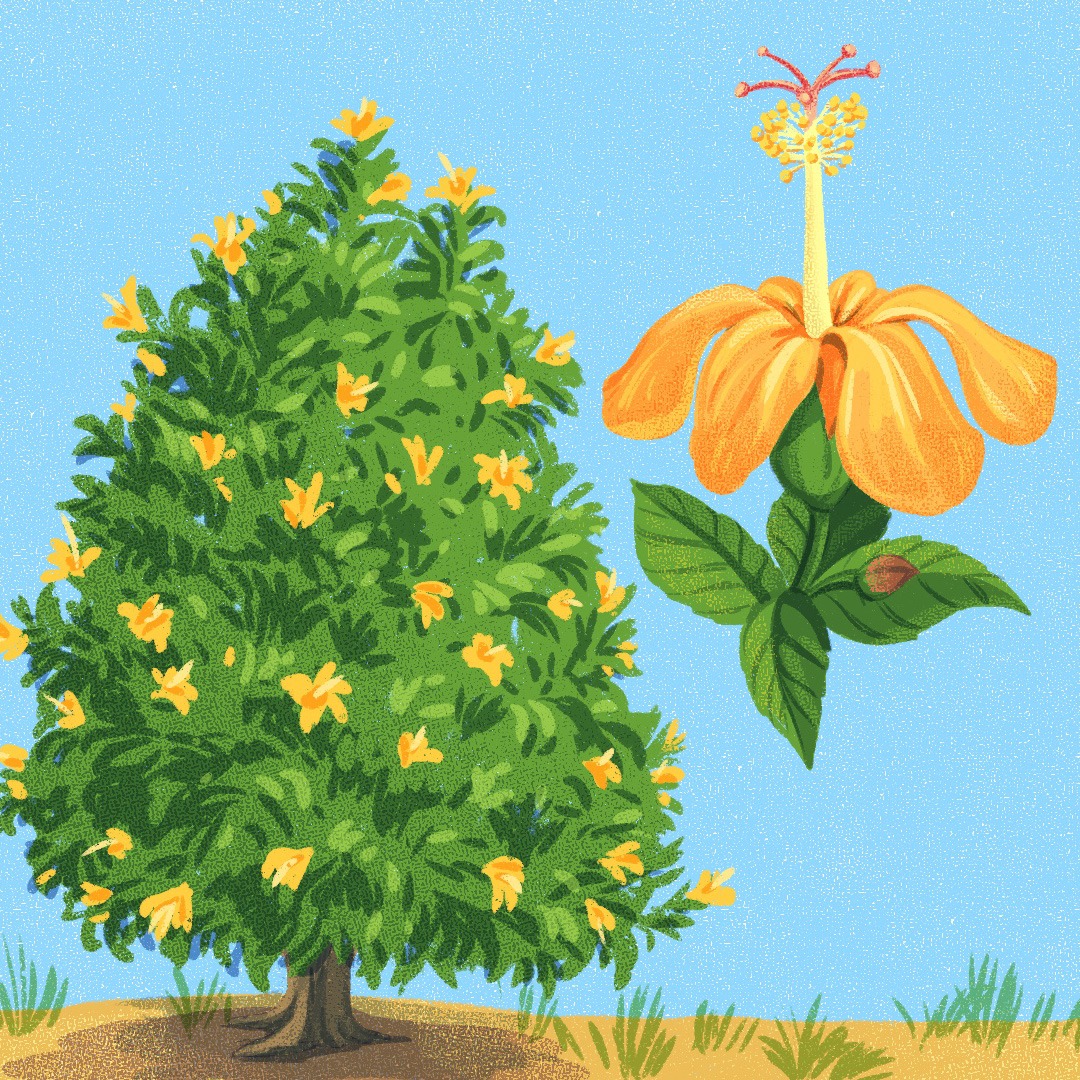
Hawaiʻi is home to around six native hibiscus species each with their own unique beauty and story. Flowers range in color from white, yellow, red, orange, and even light purple. Adopt a native hibiscus and learn more about the incredible diversity of these beautiful trees. Learn more about Hawaiʻi’s native hibiscuses »
Wiliwili hold a special place in Hawaiʻi’s lowland dry forests and surrounding communities. Beloved for their striking flowers and vibrant seeds, wiliwili have a distinct and enduring presence—their rich, storied bark and sinuous branches evoking a sense of history and connection to the past. Adopt a wiliwili and ensure their legacy lives on for future generations. Learn more about wiliwili »
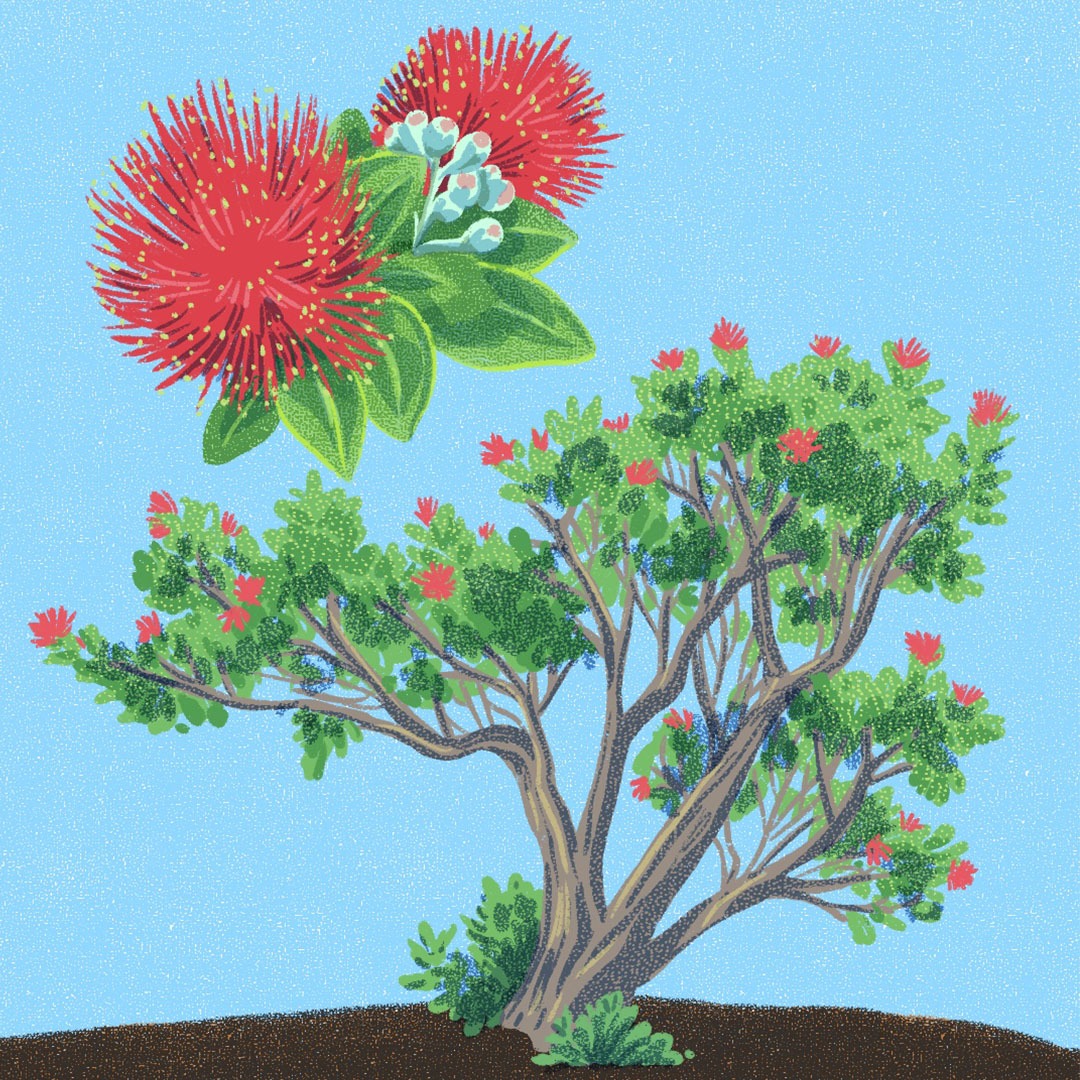
ʻŌhiʻa are deeply rooted in Hawaiʻi’s ecosystems and culture. Known for their blossoms which can range from red, orange, to even yellow, these trees support various life forms including nectar-eating honeycreepers and epiphytic plants. The cultural significance of ʻōhiʻa is second to none, with many moʻolelo (stories), mele (songs), and oli (chants) celebrating ʻōhiʻa and all it represents. Adopt an ʻōhiʻa and help ensure a future for this irreplaceable tree and all it sustains. Learn more about ʻōhiʻa »
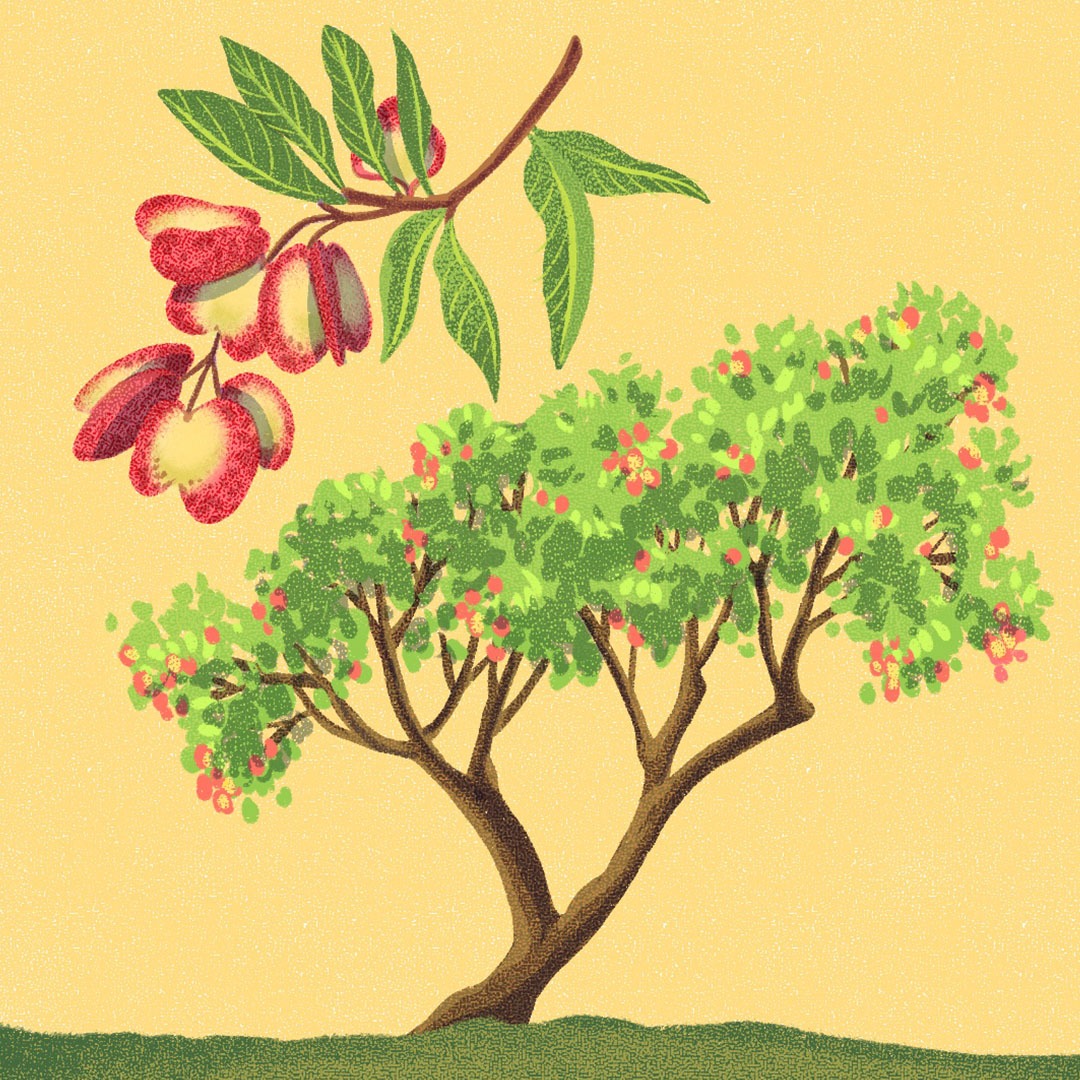
Beloved for its beautiful fruit capsules, ʻaʻaliʻi is often referred to as ʻaʻaliʻi kū makani (wind-resisting ʻaʻaliʻi) in reference to its ability to withstand strong winds. The ʻōlelo noʻeau (proverbial saying) “He ʻaʻaliʻi kū makani mai au; ʻaʻohe makani nāna e kulaʻi,” translates to, “I am a wind-resisting ʻaʻaliʻi; no gust can push me over,” and is used to describe a resilient person who can hold their own even in the face of difficulties. Learn more about ʻaʻaliʻi »
Hawaiʻi is home to around six native hibiscus species each with their own unique beauty and story. Flowers range in color from white, yellow, red, orange, and even light purple. Adopt a native hibiscus and learn more about the incredible diversity of these beautiful trees. Learn more about Hawaiʻi’s native hibiscuses »
Our partners at Molokaʻi Land Trust will be giving away kuluʻi in June
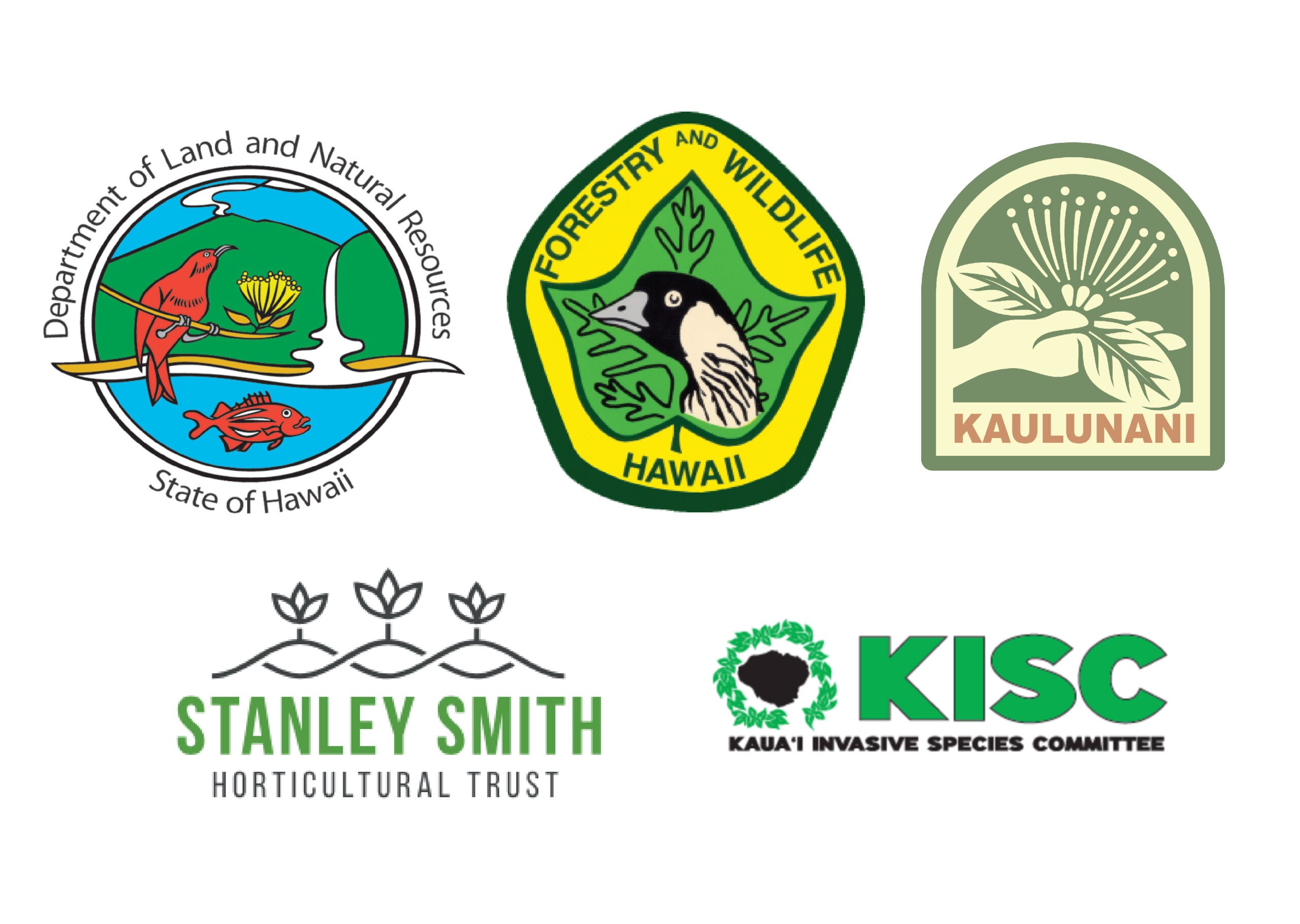
This project was made possible by the support of the Stanley Smith Horticultural Trust, the Kauaʻi Invasive Species Committee, and the Kaulunani Urban and Community Forestry Program of the DLNR Division of Forestry and Wildlife, and State and Private Forestry, branch of the U.S. Forest Service, Region 5 of the Urban & Community Forestry Program.
USDA is an equal opportunity provider, employer, and lender.